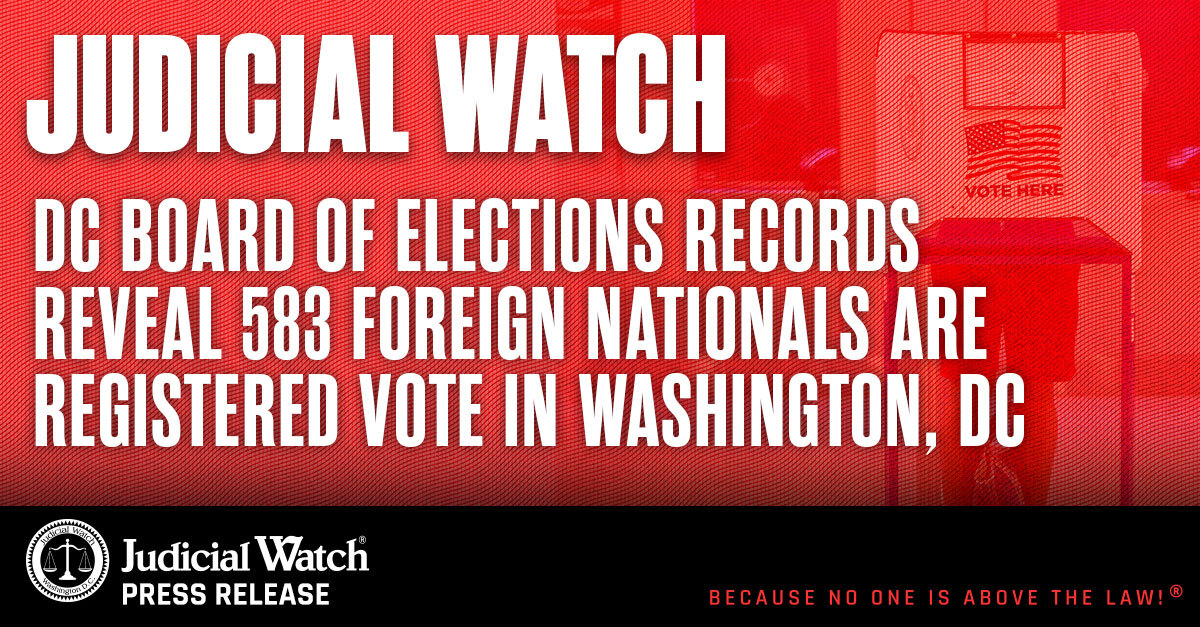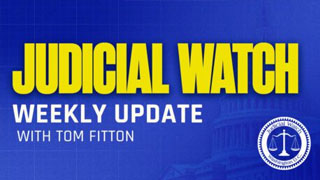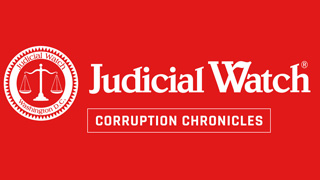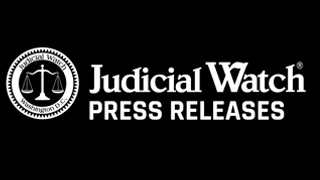

Biden Impeachment Update
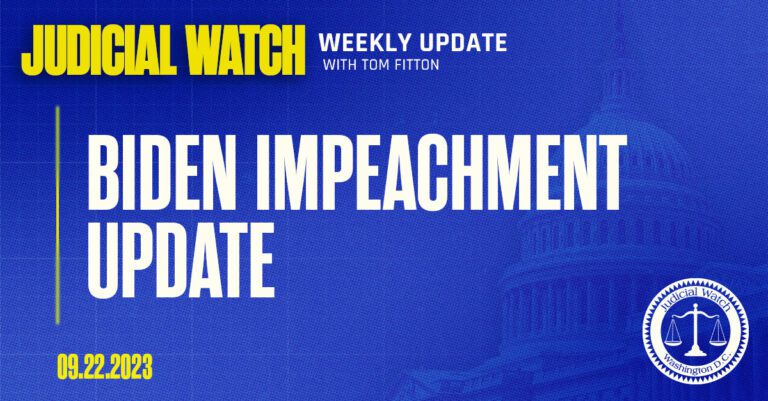

At Least Six Deaths Possibly Linked to Abortion Drug Between 2000 and 2002
Biden Impeachment Inquiry: Scoundrels, Sleaze, and Corruption
Criminal Actors May Continue to Exploit Our Porous Border, DHS Says
At Least Six Deaths Possibly Linked to Abortion Drug Between 2000 and 2002
Government health bureaucrats have been trying to hide safety issues about a controversial abortion pill, but we’ve begun to prevail against them thanks to our court action.
In collaboration with the Lozier Institute and Susan B. Anthony ProLife, we received 588 pages of records from the U.S. Department of Health and Human Services (HHS), revealing that during the two-year period 2000 to 2002 at least six women’s deaths were possibly linked to the abortion drug Mifeprex (Mifepristone, formerly known as RU-486). (Seven deaths were detailed in the records released to us, but one of those deaths may have been reported twice.)
The records were forced out thanks to our October 2022 Freedom of Information Act (FOIA) lawsuit filed after the Food and Drug Administration (a component of HHS) failed to respond to three February 2022 requests for records, including correspondence with the manufacturers of Mifeprex regarding the drug’s stability and for all FDA reports from assessments of DANCO and GenBio manufacturing facilities; investigational and new drug applications, and stability test results (Judicial Watch, Inc. v. U.S. Department of Health and Human Services (No. 1:22-cv-03152)).
The records include an “Annual Report for Mifepristone,” covering the period September 28, 2000, to September 27, 2001, produced by the Population Council/Danco Laboratories, LLC. The summary indicates that during the testing period 32 “adverse events were reported to Danco and reported by Danco to FDA in periodic reports.” (The existence of adverse event reports does not necessarily establish causation.)
Of the 32 reported adverse events, two were 15-day reports (the others were not serious and/or not unexpected). One of the 15-day reports was reported as “hemorrhage due to a ruptured ectopic pregnancy and death.” [Emphasis added] The other was reported as “post abortal parametritis/endometritis, adult respiratory distress syndrome and bilateral pneumonia.” This latter 15-day report and one case where fever was reported represent the total reports on the marketed drug suggesting infection. In addition, one infection was reported in the Population Council’s 200 mifepristone study and one death [Emphasis added] due to clostridium sordelli infection was reported in the Canadian study.
A post-marketing study dated September 28, 2001, titled “Comparison of abortions induced by mifepristone followed by vaginal versus oral misoprostol up to 56 days gestation,” reports on the “safety results” for 940 women. One person required a blood transfusion, two required administration of intravenous fluids, one required hospitalization, and one died. [Emphasis added] The study reports an overall “success” rate of 97.8 percent.
A September 27, 2002, report on mifepristone indicates that in a study of 971 women administered a combination of mifepristone and misoprostol to induce abortions, one subject needed a blood transfusion, two were administered IV fluids, one was hospitalized, and one died. [Emphasis added]
In an April 19, 2002, “Dear Health Care Provider” letter from Danco Laboratories, in a section titled “New Safety Information,” the company notes:
We have received a small number of reports of ruptured ectopic pregnancies (including one death [Emphasis added] from hemorrhage due to a ruptured ectopic pregnancy). As you will recall, Mifeprex* and misoprostol are not an effective treatment of ectopic pregnancy. Confirmed or suspected ectopic pregnancy is a contraindication for the use of Mifeprex and should be ruled out prior to initiating Mifeprex treatment. Because ectopic pregnancy may be present despite your best efforts to rule it out before starting Mifeprex treatment, you should be mindful of the possibility of an ectopic pregnancy throughout the treatment period and have a plan for its management.
***
Two cases of serious systemic bacterial infection (one fatal) [Emphasis added] following treatment with Mifeprex and misoprostol have been reported.
***
We have also received a report of a myocardial infarction [heart attack] occurring in a 21-year-old woman three days following use of Mifeprex and misoprostol.
A periodic safety update for mifepristone under the brand name Mifegyne that was conducted by Exelgyn Laboratory for the period June 1, 2001, to May 31, 2002, reports:
[T]he Medical Department of Exelgyn recorded from health professionals and authorities 23 spontaneous reports (of which 12 cases of serious adverse events, 11 non serious events and no case from clinical trials) in association with Mifepristone.” [Emphases in original]
The 12 cases of serious events reported during the period of review are classified as follows:
3 serious unlabeled. In which 1 case of unintended pregnancy with fetal malformation, 1 case of death[Emphasis added] and 1 case of thoracic pain (ischaemic accident).
9 serious labeled with 5 cases of unintended pregnancy, 2 cases of allergic reaction, 1 excessive bleeding and 1 septicaemia to Streptococcus.
These revelations come on the heels of an August 16, 2023, decision by the U.S. Court of Appeals for the Fifth Circuit, in which the Court was asked to consider whether the FDA “overlooked important safety risks in approving mifepristone and amending its restrictions.” The Appeals Court held:
In loosening mifepristone’s safety restrictions, FDA failed to address several important concerns about whether the drug would be safe for the women who use it. It failed to consider the cumulative effect of removing several important safeguards at the same time. It failed to consider whether those “major” and “interrelated” changes might alter the risk profile, such that the agency should continue to mandate reporting of non-fatal adverse events. And it failed to gather evidence that affirmatively showed that mifepristone could be used safely without being prescribed and dispensed in person.
The Biden administration is seeking Supreme Court review of the Fifth Circuit’s decision.
It is outrageous that we have had to sue in federal court for basic safety information about the abortion pill. The revelations in the records explain why the Biden administration is so desperate to bury this damning information – this drug is potentially dangerous to the mothers as well as the intended victims, the unborn babies.
In February 2023, we filed an amicus curiae (friend of the court) brief in support of Texas-based Alliance for Hippocratic Medicine (AHM) in its lawsuit against the FDA over the its approval of Mifeprex/Mifepristone. In our brief, we described the FDA’s approval process as “arbitrary, capricious, an abuse of discretion and not in accordance with the law.”
(In April 2023, U.S. District Judge Matthew Kacsmaryk in Amarillo, Texas suspended approval of Mifepristone, which essentially made sales of the abortion pill illegal in the United States while the Biden Administration’s legal challenge of the court’s ruling proceeded. Subsequently, the Supreme Court granted emergency requests by the Justice Department and the pill’s manufacturer Danco Laboratories to put the District Court’s suspension order on hold while litigation continues.)
In October 2007, we reported on a court victory that forced the FDA to release records about the abortion drug, which included confirmation that the drug was being manufactured in China.
In May 2006, we released a Special Report, containing records that shed light on the Clinton administration’s aggressive drive to push RU-486 to market in the United States. We obtained the documents from the National Archives at the Clinton Presidential Library in Little Rock, Arkansas, in February 2006, shortly after the archives allowed public access to Bill Clinton’s presidential papers.
Many more documents are due to us on the abortion pill, and we will be sure to report back to you on any significant findings!
Biden Impeachment Inquiry: Scoundrels, Sleaze, and Corruption
“Oh, what a tangled web we weave / When first we practice to deceive.” Sir Walter Scott could very well have been referring to Joe and Hunter Biden. Using Judicial Watch and House committee discoveries, Micah Morrison, our chief investigative correspondent, pulls apart the intricate strands of Biden corruption in our Investigative Bulletin:
Investigations into the Biden family are gaining steam. On September 12, House Speaker Kevin McCarthy opened an impeachment inquiry into President Joe Biden. House Republicans, McCarthy said, have uncovered “serious and credible allegations” that “paint a picture of a culture of corruption.” On another front, on September 14, David Weiss, the conflicted special counsel in the Hunter Biden probe, indicted the presidential son on three gun-related charges.
Judicial Watch President Tom Fitton called the impeachment inquiry “a necessary step for accountability and justice.” JW’s own investigations into the Bidens will continue. We’ve been at it for years. In 2020, JW Freedom of Information actions revealed new details about Ukraine corruption. We have repeatedly sued the State Department, Justice Department, FBI, CIA, and National Archives for information related to the Bidens. Read more about JW’s investigations here.
House Oversight Committee Chairman James Comer—who will lead the impeachment inquiry along with Judiciary Committee Chairman Jim Jordan and Ways & Means Committee Chairman Jason Smith—has been banging away since January with an investigation of the Biden family’s foreign business practices and international influence peddling schemes, most notably the activities of Hunter Biden. Up to now, there’s little indication that Comer has gained direct access to the financial records of Hunter and Joe Biden. Opening an impeachment inquiry supercharges congressional powers and opens the way to a deeper probe into Biden finances.
But even without direct access to Biden family finances, the Comer Committee produced a remarkable array of witnesses, testimony and documents. The outpouring of facts, documents and witness testimony can be overwhelming to sort out, but Comer went a long way to clarifying the complex story with the release of a Biden family “Influence Peddling Timeline.” It’s an important document, painting an all-too-human picture of scoundrels, sleaze, and corruption.
According to the committee, Hunter Biden and a web of associated business entities and family members raked in over $20 million from 2014 to 2017—not coincidentally the last years of the Obama administration, when then-Vice President Joe Biden wielded considerable influence. The Hunter Biden hustle has all the hallmarks of a classic Washington influence-peddling operation: shady characters, murky deals, money moving between shell companies.
The gravy train started rolling in the spring of 2014, with money first flowing in from Kazakhstan, Russia, and Ukraine: $142,000 from a well-connected Kazakh millionaire; $3.5 million from a Russian oligarch; $6.5 million from Ukraine. In 2015, a Romanian tycoon began payments eventually totaling $3 million. In 2017, $8 million materialized from China.
The Kazakh Connection: A Sports Car for Hunter
The first sign that something was not kosher in Biden World comes in April 2014, when a controversial Kazakh oligarch, Kenes Rakishev, transfers $142,300 to a key Biden-connected financial entity, Rosemont. The next day, Rosemont transfers exactly $142,300 to a New Jersey auto dealership for Hunter Biden’s purchase of a Fisker electric car, which he quickly trades up for a Porsche.
Rakishev was a close associate of Kazakhstan Prime Minister Karim Massimov. Around the time of Hunter Biden’s sports car windfall, someone had arranged for Rakishev and Massimov to be to be photographed at Washington’s Café Milano with Hunter Biden and a very special guest: then-Vice President Joe Biden.
Such a photograph is precious coin of the realm in corrupt countries—an advertisement of power and connections. Corruption in Kazakhstan is a serious concern, according to international watchdogs. Of course this was a fact well known to both Bidens, but it did not prevent them from joining Rakishev and Massimov for dinner at the Café Milano—twice.
According to a Comer Committee interview of Biden business partner Devon Archer, Hunter Biden and Joe Biden joined the Kazakhs for dinner in April 2014 and again in April 2015. It’s unclear if the famous photograph is from the first or second dinner. In May of 2014, Hunter Biden traveled to Kazakhstan to try to drum up business between the Ukrainian energy company Burisma, Kazakhstan’s KazMunay Gas (where Rakishev served as a director), and a Chinese energy company.
Enter the Russian: A $3.5 Million Payday
The money trail in the Biden inquiry runs through a private investment firm that began life as Rosemont Seneca Partners and morphed over time into a web of limited liability companies. LLCs offer participants—legitimate companies and crooks alike—maximum secrecy. Rosemont Seneca Partners was founded in 2009 by Biden and two connections from Yale University: Devon Archer and Chris Heinz. Heinz is the stepson of former Secretary of State John Kerry and heir to the Heinz food company fortune. He departed the partnership in 2014.
The Comer Committee offers in its “Second Bank Records Memorandum” a mind-blowing list of twenty-one financial entities associated with the Biden enterprise. Most of them are LLCs and many have the name “Rosemont” or “Seneca” in them. We’ll refer to them simply as “Rosemont entity,” but the diligent reader can find details of the myriad Biden-connected LLCs in the three committee bank records memoranda linked at the end of this report.
Another guest at the Café Milano dinner in Washington in April 2014, according to the Comer Committee timeline: Russian oligarch Yelena Baturina. Two months earlier, Baturina had wired $3.5 million to a Rosemont entity. The Rosemont entity transferred $2.7 million to a bank account in a second Rosemont LLC jointly owned by Biden and Archer. Separately, $750,000 was sent from a Rosemont entity directly to Archer.
The Ukraine Connection: A $10 Million Bribe?
2014 was a very good year for Hunter Biden’s finances. In May, Biden and partner Devon Archer joined the board of Ukrainian oligarch Mykola Zlochevsky’s embattled energy company, Burisma. Each would be paid $1 million per year.
The committee’s third bank memorandum notes that “then-Vice President Joe Biden visited Ukraine” on an anti-corruption drive aimed at Zlochevsky allies “soon after first payments” were sent to Archer and Hunter Biden. The payments were wired to a Rosemont entity and then “transmitted in incremental amounts to Hunter Biden’s different bank accounts.”
By the end of the year, Hunter Biden had met with a high-level Obama administration official about Burisma. Zlochevsky complained about “government pressure” and urged Biden to contact his father, the vice president. In the interview released by the committee, Archer notes that Hunter Biden “called DC” after being pressured by Zlochevsky and his associates.
Earlier this year, Senator Chuck Grassley released a bombshell FBI informant report of a 2016 meeting with Zlochevsky. In the report, Zlochevsky claimed he had been coerced into paying a $10 million bribe to Hunter and Joe Biden. It “cost 5 [million] to pay one Biden, and 5 [million] to another Biden,” the FBI informant reported Zlochevsky saying.
Zlochevsky told the informant the payments were well hidden. It “would take them ten years to find the records,” he said.
In total, notes the committee, a total of $6.5 million went to “the Biden family and their associates” from the Ukraine connection.
The Romanian Payout: The Robinson Walker Shell
By November 2015, Hunter Biden had struck up a lucrative relationship with a controversial Romanian real-estate tycoon, Gabriel Popoviciu. Meanwhile, over at the White House, Vice President Biden was taking point on an anti-corruption campaign aimed at Romania. In September, Vice President Biden had welcomed the Romanian president to the White House, declaring his support for the country’s “anti-corruption efforts.”
Popoviciu was fighting bribery and corruption charges connected to a high-profile land deal near Bucharest. Hunter Biden joined the Popoviciu defense team. From 2015 to 2017, according to the Comer timeline, Biden met twice with the U.S ambassador to Romania and traveled at least once to the country. Meanwhile, more than $3 million from Popoviciu flowed to Robinson Walker LLC, an account controlled by a close Biden family associate, John Robinson “Rob” Walker.
According to the committee’s second bank memoranda, the Robinson Walker LLC is at the center of many payments to the Biden family and associates. Robinson Walker “received $3 million from Romanian Gabriel Popoviciu’s Cypriot company and then made payments to the Biden family,” the memo notes. Among the recipients was Hallie Biden, the widow of Hunter’s brother, Beau.
The committee noted that “while Vice President Biden advocated publicly for anti-corruption policies in Romania, bank records show Biden family members and business associates were simultaneously reaping in significant amounts of money” from Popoviciu.
China: ‘10 held for the big guy?’
By January 2017, the Obama administration was coming to an end and Hunter Biden and his associates were angling for their biggest score of all: China.
The target, cultivated for years, was the giant conglomerate CEFC China Energy. The Biden business plan was to sell U.S. energy products to CEFC and expand into other deals. CEFC was interested in a relationship.
The total amount paid to “the Biden family and their associates” by China, notes the Comer Committee, is “over $8 million.” Payments by CEFC were sent to the Robinson Walker shell—the same LLC used for the Romanian payouts—and distributed to various Biden family members and associates.
In March 2017—two months after Joe Biden left the vice presidency—a $3 million CEFC payment arrived at the Walker shell. Rob Walker distributed “over $1 million of that money to Biden family members,” notes the second bank memoranda, including payments to Hunter Biden; Hallie Biden; Joe Biden’s brother, business consultant and dealmaker James Biden; and a still-mysterious account simply labeled “Biden.”
Another beneficiary was Hunter Biden’s business partner James Gilliar. The Walker shell wired him $1 million. The British energy consultant was a key figure in putting the Biden network together with CEFC—including, seemingly, Joe Biden.
In a May 2017 email to Hunter Biden and associates about profit-sharing from the CEFC deal, Gilliar asks, “10 held by H for the big guy?”
An IRS agent who worked on the Hunter Biden case was pressed about the Gilliar email in July testimony before Congress. Joseph Ziegler told the House Oversight Committee that “all I can do is speak to the evidence there” and “that email, ‘ten held by H for the big guy’ and from what I understand that to be is his dad, President Biden.”
In August 2017, in the biggest payday of all, CEFC wired $5 million to a new LLC formed by Hunter Biden and Gongwen Dong—a top aide to CEFC Chairman Ye Jianming. The new company would pursue energy and infrastructure deals. Hunter would receive a $500,000 retainer and a $100,000 monthly payment. James Biden would be paid $65,000 per month.
Hunter Biden also received an additional $1 million retainer to represent Patrick Ho, a high-ranking CEFC official in the United States.
A month after the $5 million CEFC wire, Hunter Biden was busy in Washington setting up a new office for himself and his CEFC partners. “Please have keys made available for new office mates,” he emailed building management. “Joe Biden, Jill Biden, Jim Biden, Gongwen Dong (Chairman Ye CEFC emissary).” Hunter Biden added: “I would like the office sign to reflect the following: Biden Foundation, Hudson West (CEFC US).”
It looked like happy days were here again for the Bidens and their new Chinese friends. But in fact, the end was near.
The Fall of the House of Hunter
In November 2017, Patrick Ho—the high-ranking CEFC agent—was arrested in New York on suspicion of bribery and money laundering. Four months after Ho’s arrest, CEFC Chairman Ye Jianming vanished. According to news reports, he was suspected of widespread economic crimes at the helm of CEFC and arrested on the orders of Communist Party boss Xi Jinping. Ye has not been heard from since. CEFC collapsed into bankruptcy. Ho was convicted of bribery and money laundering in 2019 in connection with African oil deals and sentenced to three years in prison.
With Ho’s arrest, Biden business came to a screeching halt. Hunter Biden, by his own account, spiraled deep into a crack cocaine addiction. Many of his associates also did not fare well.
Former client Gabriel Popoviciu, the Romanian real-estate tycoon, fought a six-year, ultimately successful battle to prevent his extradition from London to Bucharest to face bribery and corruption charges. Ukrainian oligarch Mykola Zlochevsky has been fending off corruption charges since 2012, accused of large-scale theft of government funds. He is believed to be living in Monaco. Karim Massimov, the former Kazakhstan prime minister who dined with Hunter and Joe Biden in 2014 and 2015, was sentenced to eighteen years in prison for attempting a coup. Business partner Devon Archer was found guilty of fraud in 2018 in a conspiracy to cheat a Native American tribe in a bond scheme; he is appealing the conviction.
Doubtless there will be more to come about Hunter Biden as the impeachment inquiry digs deeper into bank records and the money trail. You lie down with dogs, you get up with fleas. But what about Joe Biden? Some questions are obvious.
Who is connected to that mysterious account named “Biden?”
Is Joe Biden “the big guy” and was “10”—or anything—held for him? Where is it?
Did a Ukrainian oligarch funnel $10 million in bribes to the Bidens? Where are the records?
Other questions may lead the committee deep into a wilderness of mirrors.
For example, is there a relationship between Vice President Biden’s anti-corruption statements and payments to Hunter Biden-connected accounts?
Are there other, unidentified accounts?
What is the financial relationship between James Biden to his brother Joe?
Did foreign intelligence services—no doubt tipped off to Hunter Biden’s activities—play any role in the Biden affair?
Interesting times ahead.
Criminal Actors May Continue to Exploit Our Porous Border, DHS Says
The Biden administration’s border invasion is placing our country at risk in several ways. The disturbing numbers continue to pile up: terrorists, fentanyl, criminals. Our Corruption Chronicles blog has the latest:
Created after 9/11 to prevent another terrorist attack, the Department of Homeland Security (DHS) keeps slamming Americans with grim news involving its struggles to fulfill its critical mission. Days after the agency admitted it lost track of more than 177,000 illegal immigrants freed inside the United States, it released a Homeland Threat Assessment that reveals a record number of people with terrorist ties have tried to enter the country through the Mexican border, migrant encounters along the northern border have also reached an all-time high and that terrorists and criminal actors may continue to exploit the “elevated flow” and “increasingly complex security environment to enter the United States.” The situation will only get worse because the agency responsible for safeguarding the country expects “continued high numbers of migrant encounters over the next year,” according to the new assessment which was created with “insights” from the intelligence community.
DHS is a monstrous federal agency with 260,000 employees and a whopping $58 billion annual budget that may seem to many like sufficient resources to succeed in its key mission of countering terrorism and securing the nation’s borders. The new report documents that the agency has not only failed miserably to secure the famously porous southern border, but its northern counterpart as well. Through June illegal immigrant encounters along the northern border have reached record highs, the new report states, with over 132,000 migrants compared to 68,000 during the same amount of time last fiscal year. Among the most concerning information provided in the document is the increase in foreigners with terrorism connections trying to sneak into the country. As of July, approximately 160 individuals that appear on the Federal Bureau of Investigation’s (FBI) terrorist watchlist attempted to enter the U.S. via Mexico compared to 100 in all fiscal year 2022.
Adding to the problem, a spike in illegal immigrants from the eastern hemisphere—which includes countries with terrorist ties—has doubled from more than 110,000 in fiscal year 2022 to over 228,200 through June of this fiscal year which ends on September 30. “We expect the influx of these migrants will continue as they face poor economic, political, security, and climate conditions in their countries and use uneven visa policies across the globe to reach the United States,” the Homeland Threat Assessment says. Mexican drug cartels, known as Transnational Criminal Organizations (TCO), are also exploiting the U.S. security failures, referred to as a “complex environment” in the DHS report, to smuggle huge amounts of deadly drugs across the border. “TCOs almost certainly will continue to smuggle drugs into our country while also exploiting migrants for financial gain,” the agency writes, adding that “these criminal organizations likely will seek new technologies and develop novel techniques to improve their ability to evade our border security measures.”
DHS provides the country with a somber projection involving Mexican cartels, writing that it expects illegal drugs produced in Mexico and sold in the United States will continue to kill more Americans than any other threat. “During the past year, US-based traffickers have become more involved in the mixing and pressing of fentanyl, contributing to more lethal mixes of this already deadly drug,” the report states. It also reveals that fentanyl seizures along the southern border continue to increase throughout 2023 with Customs and Border Protection (CBP) on track to seize a record amount of the deadly drug before the end of the fiscal year.
“Transnational criminal organizations (TCOs) in Mexico, particularly the Sinaloa Cartel and the New Generation Jalisco Cartel, remain the primary smugglers of fentanyl and other drugs into the United States,” DHS assessment reveals. “These organizations continue to use bribery and violence to grow their smuggling and narcotics production operations in Mexico, and they rely on companies in China to purchase fentanyl precursor chemicals and pill pressing equipment.”
DHS does not discuss its strategy to combat the unprecedented border crisis, which it predicts will not improve anytime soon. “The complex border and immigration security challenges we have faced over the least year are likely to continue,” the agency writes in its latest assessment.
Until next week,









